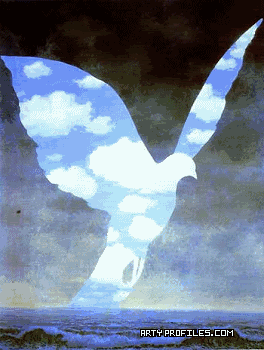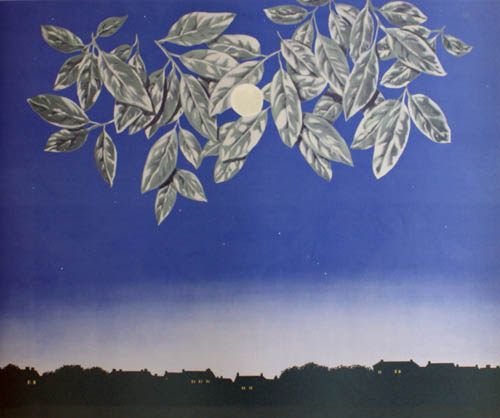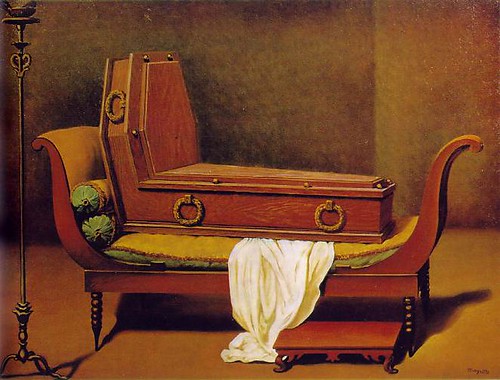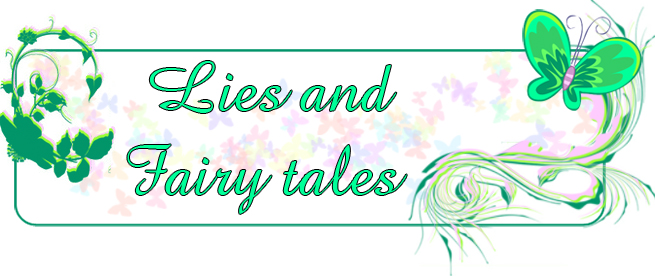








Life
Magritte was born in Lessines, in the province of Hainaut, in 1898, the eldest son of Léopold Magritte, a tailor, and Adeline, a milliner. He began lessons in drawing in 1910. In 1912, his mother committed suicide by drowning herself in the River Sambre. Magritte was present when her body was retrieved from the water. The image of his mother floating, her dress obscuring her face, may have influenced a 1927–1928 series of paintings of people with cloth obscuring their faces, including Les Amants, but Magritte disliked this explanation.[1] He studied at the Académie Royale des Beaux-Arts in Brussels for two years until 1918. In 1922 he married Georgette Berger, whom he had met in 1913.[2]
Magritte worked as an assistant designer in a wallpaper factory, and was a poster and advertisement designer until 1926 when a contract with Galerie la Centaure in Brussels made it possible for him to paint full-time. In 1926, Magritte produced his first surreal painting, The Lost Jockey (Le jockey perdu), and held his first exhibition in Brussels in 1927. Critics heaped abuse on the exhibition. Depressed by the failure, he moved to Paris where he became friends with André Breton, and became involved in the surrealist group.
When Galerie la Centaure closed and the contract income ended, he returned to Brussels and worked in advertising. Then, with his brother, he formed an agency, which earned him a living wage.
Surrealist patron Edward James allowed Magritte, in the early stages of his career, to stay rent-free in his London home and paint. James features in two of Magritte's pieces, Le Principe du Plaisir (The Pleasure Principle) and La Reproduction Interdite. [3]
During the German occupation of Belgium in World War II he remained in Brussels, which led to a break with Breton. At the time he renounced the violence and pessimism of his earlier work, though he returned to the themes later.
His work was exhibited in the United States in New York in 1936 and again in that city in two retrospective exhibitions, one at the Museum of Modern Art in 1965, and the other at the Metropolitan Museum of Art in 1992.
Magritte died of pancreatic cancer on August 15, 1967 and was interred in Schaarbeek Cemetery, Brussels.
Popular interest in Magritte's work rose considerably in the 1960s, and his imagery has influenced pop, minimalist and conceptual art.[4] In 2005 he came ninth in the Walloon version of De Grootste Belg (The Greatest Belgian); in the Flemish version he was 18th.
Philosophical and artistic gestures
A consummate technician, his work frequently displays a juxtaposition of ordinary objects in an unusual context, giving new meanings to familiar things. The representational use of objects as other than what they seem is typified in his painting, The Treachery of Images (La trahison des images), which shows a pipe that looks as though it is a model for a tobacco store advertisement. Magritte painted below the pipe "This is not a pipe" (Ceci n'est pas une pipe), which seems a contradiction, but is actually true: the painting is not a pipe, it is an image of a pipe. (In his book This Is Not a Pipe French philosopher and critic Michel Foucault discusses the painting and its paradox.)
Magritte used the same approach in a painting of an apple: he painted the fruit realistically and then used an internal caption or framing device to deny that the item was an apple. In these Ceci n'est pas works, Magritte points out that no matter how closely, through realism-art, we come to depicting an item accurately, we never do catch the item itself - we cannot smoke tobacco with a picture of a pipe.[citation needed]
His art shows a more representational style of surrealism compared to the "automatic" style seen in works by artists like Joan Miró. In addition to fantastic elements, his work is often witty and amusing. He also created a number of surrealist versions of other famous paintings.
René Magritte described his paintings by saying,
- My painting is visible images which conceal nothing; they evoke mystery and, indeed, when one sees one of my pictures, one asks oneself this simple question, "What does that mean?". It does not mean anything, because mystery means nothing either, it is unknowable.
In popular culture
The 1960s brought a great increase in public awareness of Magritte's work. One of the means by which his imagery became familiar to a wider public was through reproduction on rock album covers; early examples include the 1969 album Beck-Ola by the Jeff Beck group (reproducing Magritte's The Listening Room), Jackson Browne's 1974 album, Late for the Sky, with artwork inspired by Magritte's L'Empire des Lumières[5], and the Firesign Theatre's album Just Folks . . . A Firesign Chat based on The Mysteries of the Horizon.[6] Alan Hull of UK folk-rock band Lindisfarne used Magritte's paintings on two solo albums in 1973 and 1979. Styx adapted Magritte's Carte Blanche for the cover of their 1977 album The Grand Illusion, while the cover of Gary Numan's 1979 album The Pleasure Principle, like John Foxx's 2001 The Pleasures of Electricity, was based on Magritte's painting Le Principe du Plaisir.
Jethro Tull mention Magritte in a 1976 lyric,[citation needed] and Paul Simon's song "Rene And Georgette Magritte With Their Dog After The War" appears on the 1983 album Hearts and Bones. Paul McCartney, a life-long fan of Magritte, owns many of his paintings, and claims that a Magritte painting inspired him to use the name Apple for the Beatles' media corporation. Magritte is also the subject and title of a John Cale song on the 2003 album HoboSapiens.
Numerous films have included imagery inspired by Magritte. The Son of Man, in which a man's face is obscured by an apple, is referenced in the 1992 film Toys, the 1999 film The Thomas Crown Affair and in the 2004 short film Ryan. In the 2004 film I Heart Huckabees, Magritte is alluded to by Bernard Jaffe (Dustin Hoffman) as he holds a bowler hat. According to Ellen Burstyn, in the 1998 documentary The Fear of God: 25 Years of "The Exorcist", the iconic poster shot for the film The Exorcist was inspired by Magritte's L'Empire des Lumières.
The Spanish television show El Planeta Imaginario (1983–1986) dedicated two episodes to René Magritte: "M, el extraño viajero" (M, the strange traveller) and "La Quimera" (The Chimera).[citation needed]
Magritte's painting The Treachery of Images is referred to in The Forbidden Game: The Chase, a book by L. J. Smith, in which the difference between image and reality becomes key to solving the entire conflict. The same painting (and its caption, "This is not a pipe") inspired a graphic in the video game Rayman Raving Rabbids. The online game Kingdom of Loathing refers to this painting, as well as to The Son of Man.
Magritte appears, with some of his art, on a 2008 issue of the Belgian 500-Franc note.
On November 21, 2008, the Google homepage featured a logo dedicated to Magritte. It was a mixture of The Son of Man and Golconda.
Artists influenced by Magritte
Contemporary artists have been greatly influenced by René Magritte's stimulating examination of the fickleness of images. Some artists that were influenced by Magritte's works include John Baldessari, Sherrie Levine, Ed Ruscha, Andy Warhol, Jasper Johns, Vija Celmins, Marcel Broodthaers and Martin Kippenberger. Some of the artists' works integrate direct references and others offer contemporary viewpoints on his abstract fixations. [7]
Source: Wikipedia


No comments:
Post a Comment